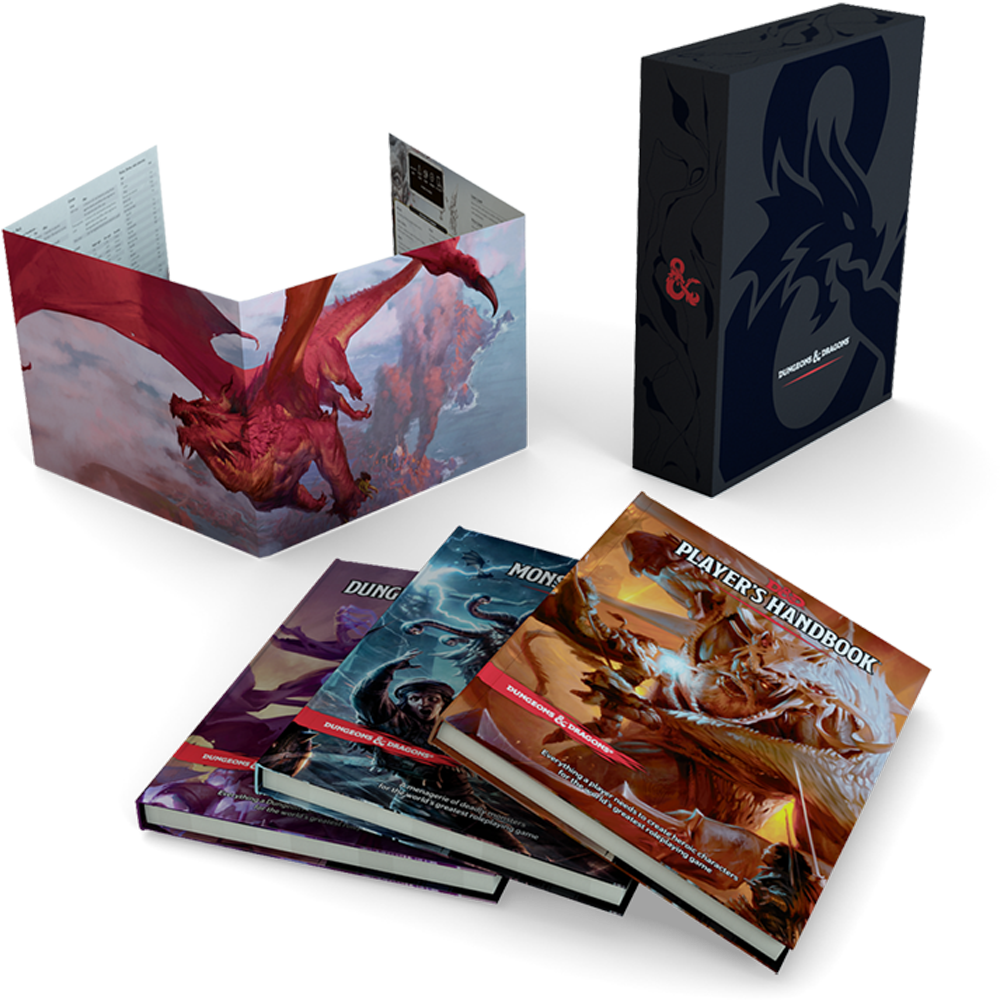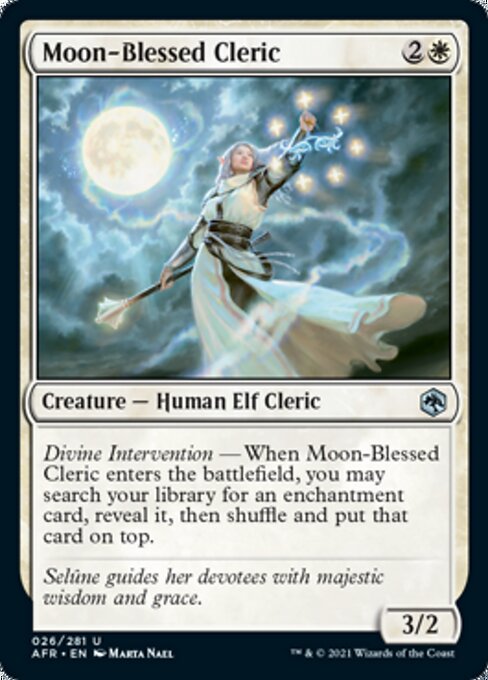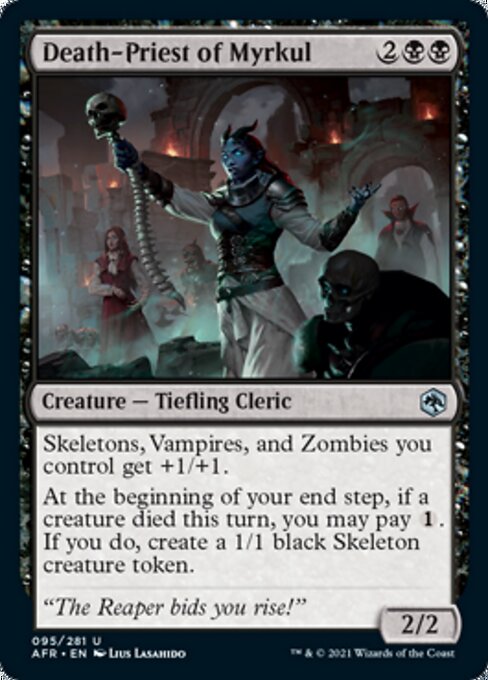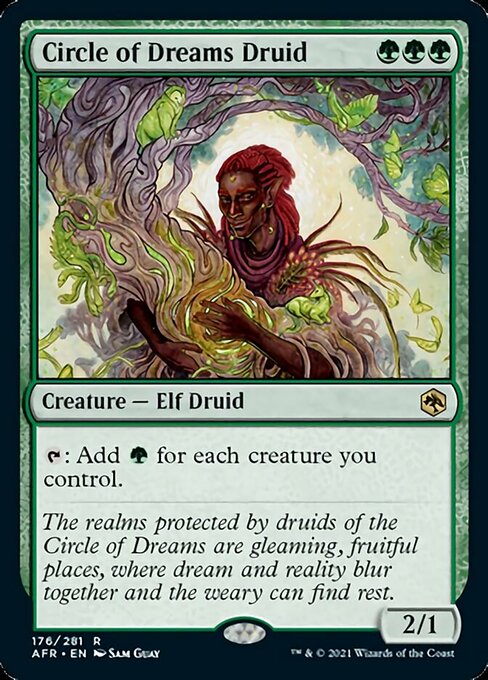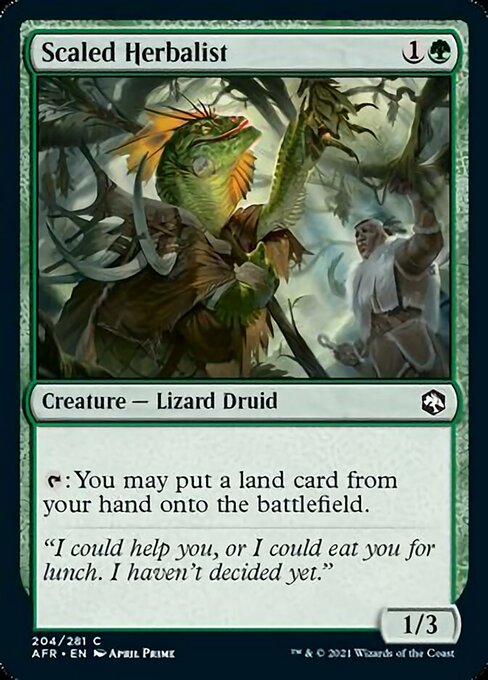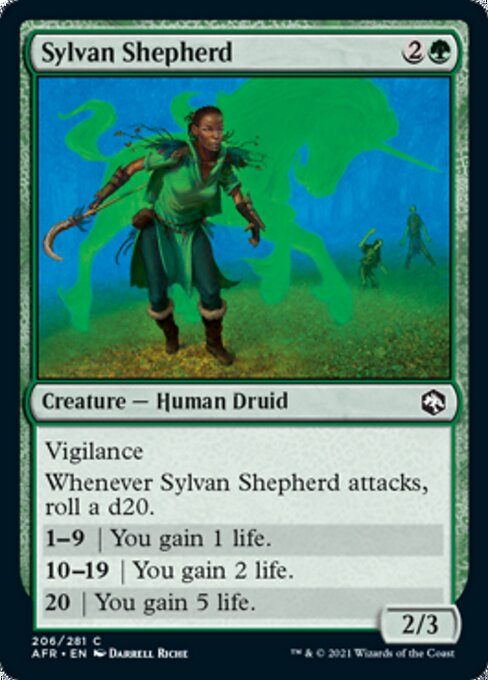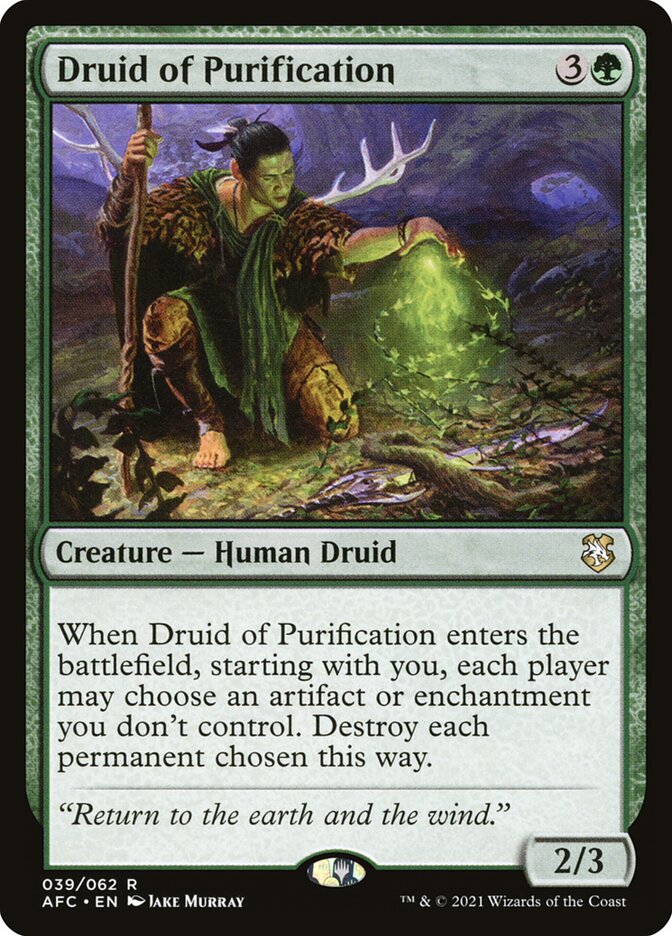We’ve seen the comments where there are people discovering that their friends actually play the game, others who have only heard of it, and more who have always wanted to play it. We’ve started to see discussions of excited wannabe Dungeoneers wanting to form groups online, or meet up in person to play the game. Please stay safe, the pandemic isn’t over yet.
“To help others find more kaki to play tabletop games with.”
This is why we curate KakiTabletop.
It must have been challenging to translate/adapt so many of these huge concepts that take up literal pages, and entire books, into (mere) Magic cards. So it was interesting to look at what they’ve done, and figure out how they’ve translated/adapted the lore, the artwork, the flavour, and the experience of D&D. Concepts like checking for traps, or the idea that a party will first meet in a tavern, and the various monsters that would usually have an entire page dedicated to them, being condensed down into a single card. Maintaining the flavour and thematics of D&D in Magic.
🐲 First of all, thank you for the literal thousands of views on the Battle of the Century Dungeons & Dragons play-through video that’s hosted on Grim Films YouTube channel, and all the kind words some of you had for the Dungeon Master (DM).
🐉 It was an incredible joy to plan, and run the game for them. It was actually a couple of hours long, but we had to cut it for time. We’re just so glad that it’s finally out there for all to see; we’ve been sitting on it for literal months due to the global pandemic. It was a little late, as we had originally planned for this video to be released alongside the new Adventures in the Forgotten Realms (AFR) Magic: the Gathering card set. But y‘know what: it’s a two-for-the-price-of-one promotion of the Magic card game and the D&D role-playing game.
Class category
To play a game of Dungeon & Dragons, you’ll need to create a Player Character (PC). While filling up your character sheet, you’ll have to choose a Class. Referring to the Player’s Handbook (PHB), there are 12 classes to choose from.
There are Classes for fighting: Barbarians, Fighters, Monks, Paladins, Rangers, and Rogues; and there are spell-casters: Sorcerers, Warlocks, and Wizards. There are also Classes that are in-between these stereotypes, the support Classes: Bards, Clerics, and Druids.
What’s interesting is that in Magic, the Classes have become Enchantment cards, with the subtype: Class. They’re not player enchantments, which we thought would have been more flavourful (because D&D is all about the players, and we think it would have been cool to Enchant the Player as they’ve done in previous cards… But having them as merely an Enchantment simplifies it a bit.
You’ll also notice that these Enchantments start at level one, and can be raised to level 2 and then to level 3. Referring to the PHB again, you’ll find a table summarizing the benefits each Class gains at every level; these tables go from level 1 to level 20.
Divide 20 by 3, and you’ll get a number between 6 and 7. This is interesting because every increment on the Enchantment card corresponds to the fact each Class will receive a major feature improvement at level 7, and another one at level 14. They did a good job translating this part of the RPG into the TCG.
Looking at all the creatures in this Magic card set, you’ll notice a whole bunch of them with two creature types that clearly correspond to the PCs’ having a race and a class, e.g. human fighter, elf wizard,etc.
In addition to Barbarians, Bards, Clerics, Druids, Fighters, Monks, Paladin, Rangers, Rogues, Sorcerers, Warlocks, and Wizards; we’ve found an Artificer as well. Artificers are not from the PHB, but are actually from the (relatively) new Eberron campaign book.
Barbarian Class
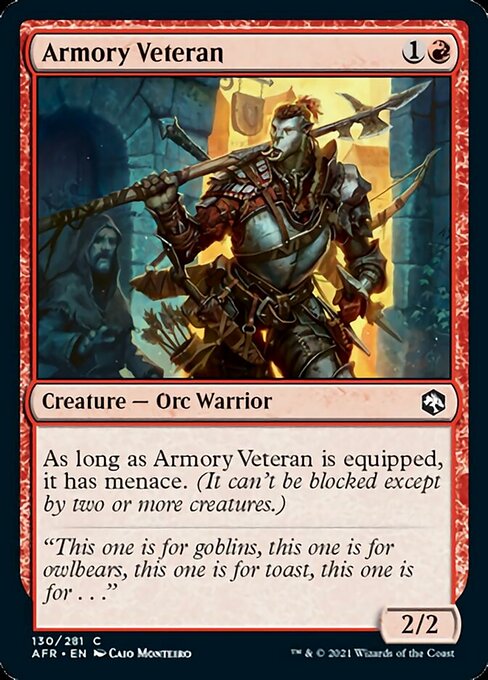

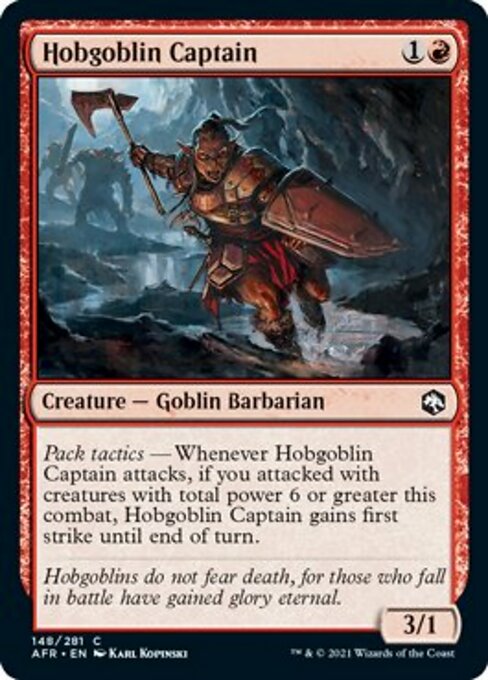
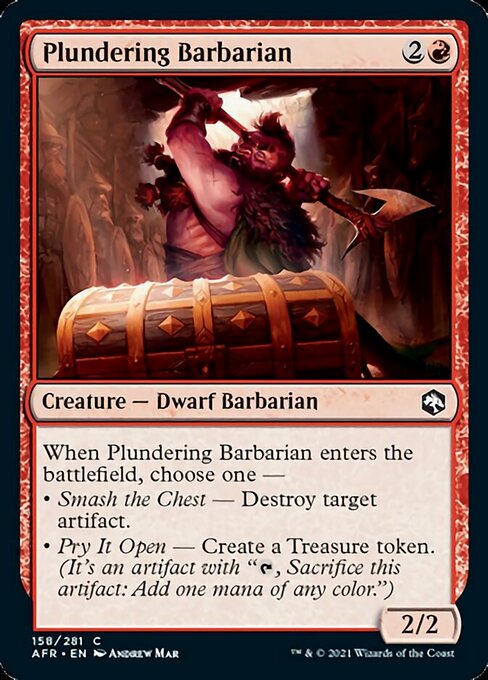
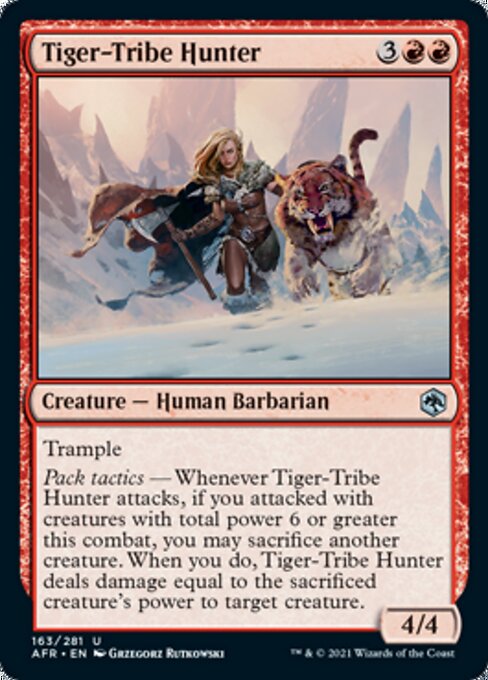
Fighter Class
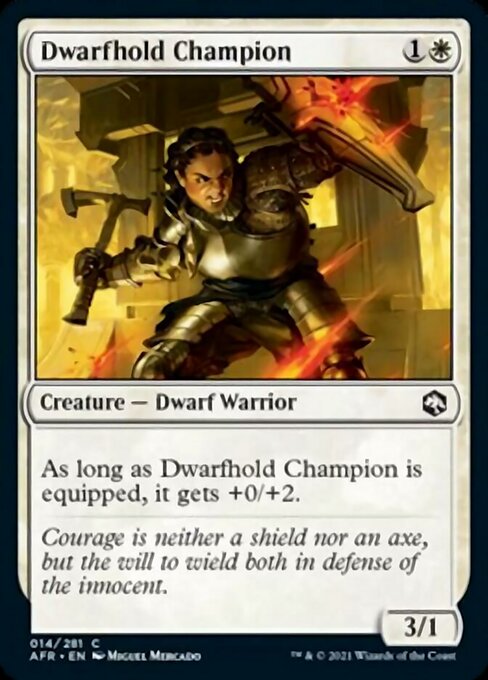
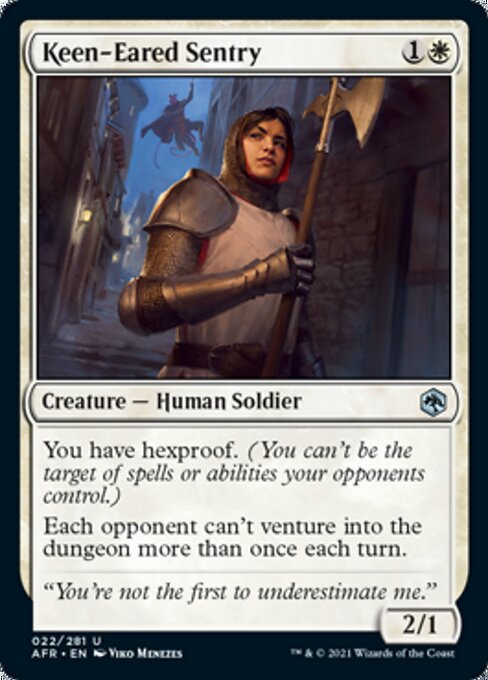
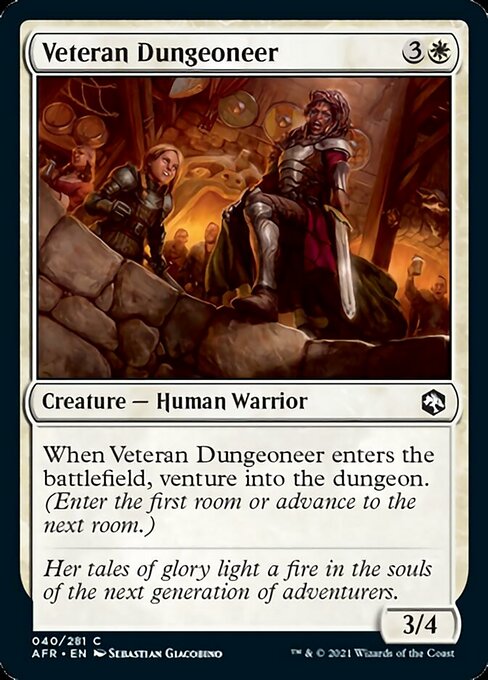


Paladin Class
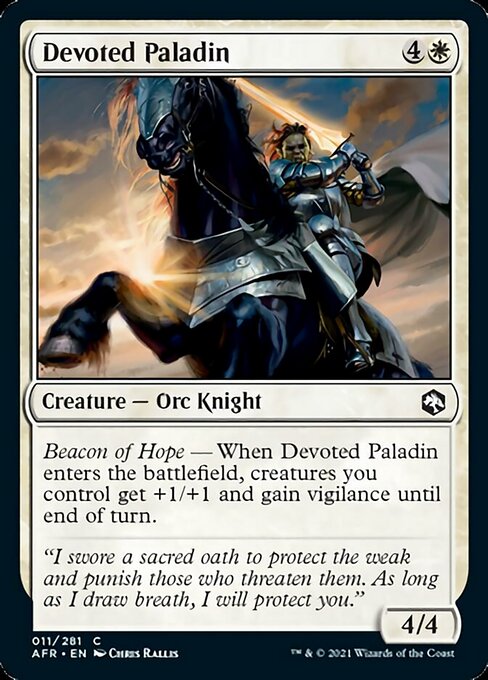


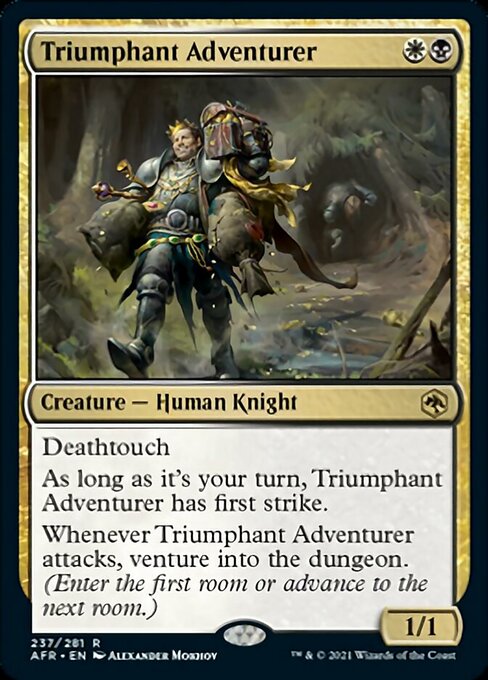
Bard Class

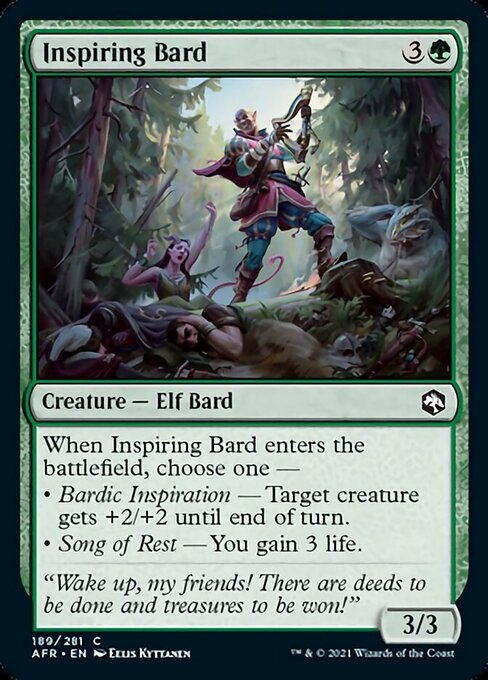
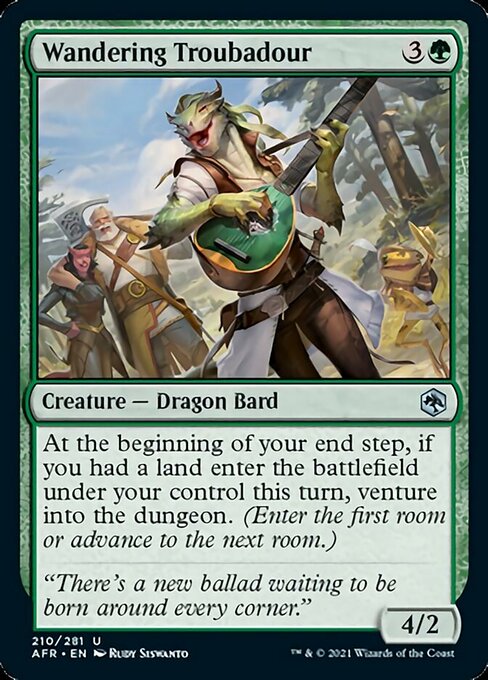
Monk Class
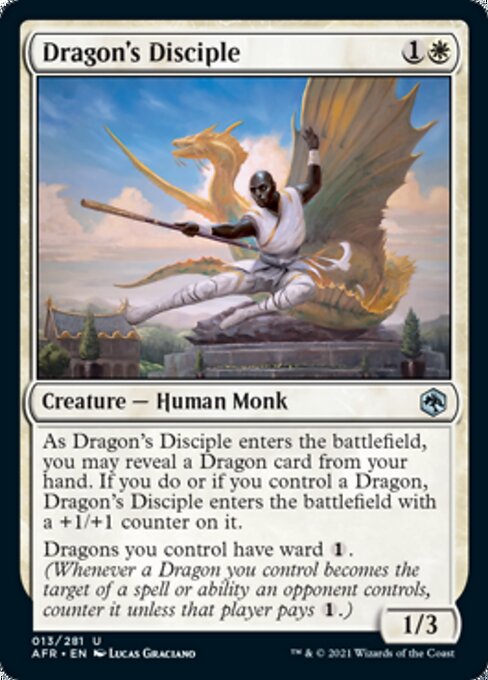
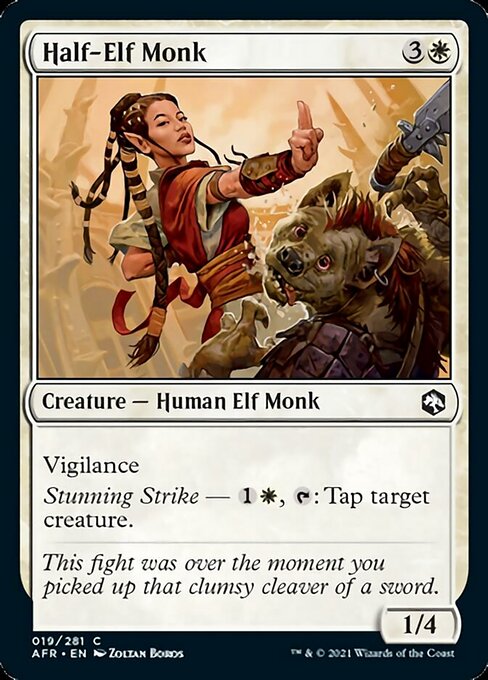
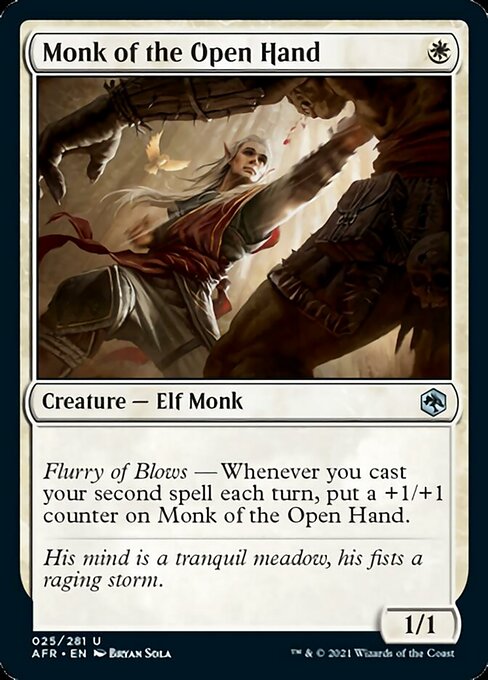
Ranger Class
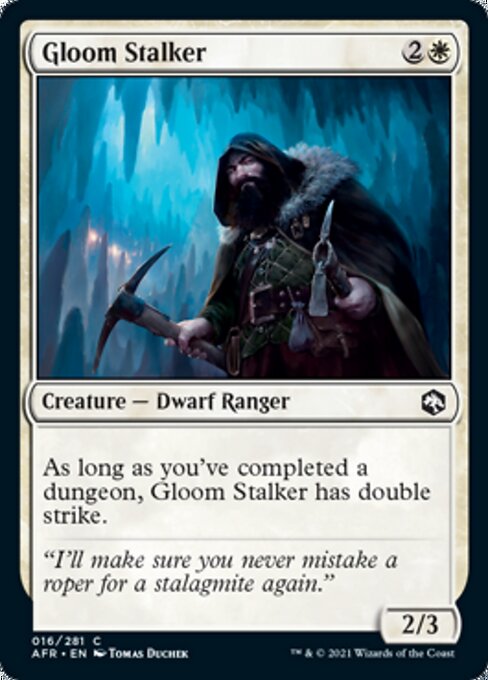

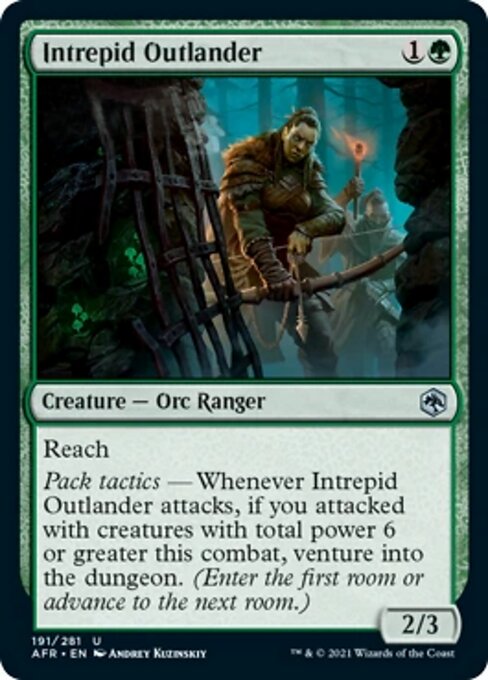
Rogue Class


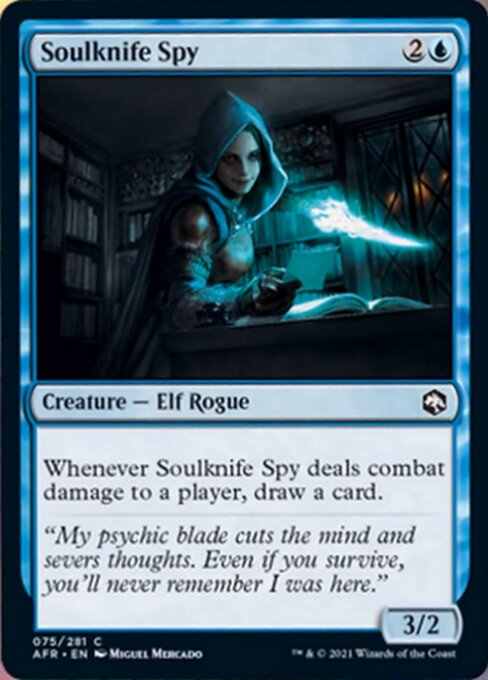
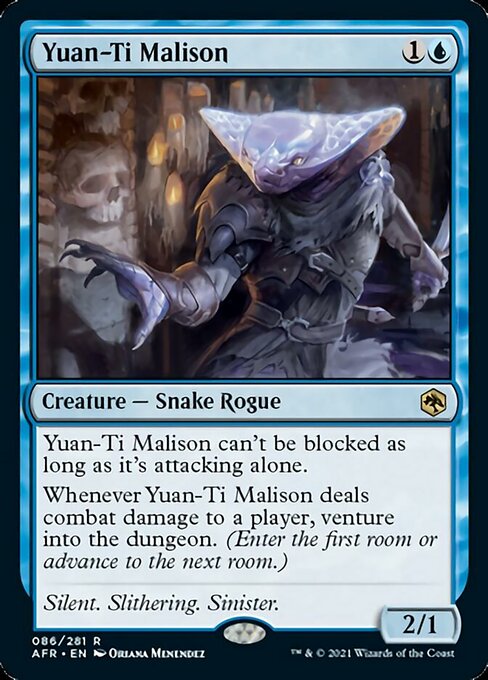
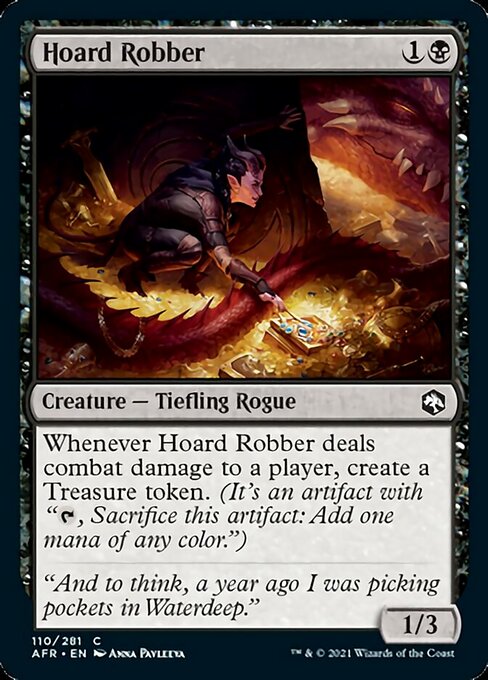


Sorcerer Class
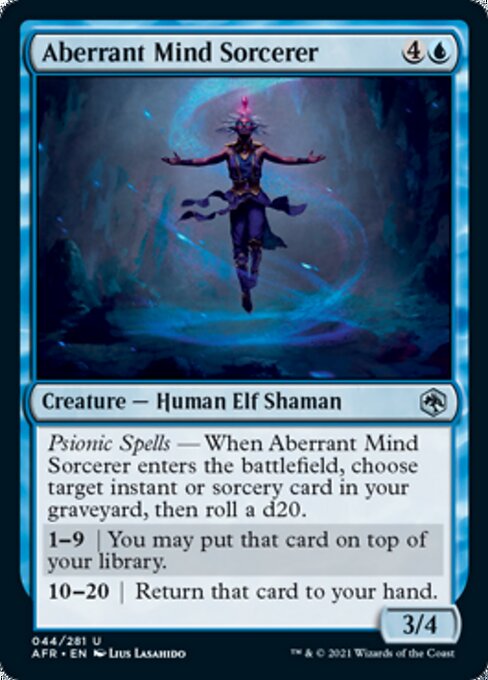
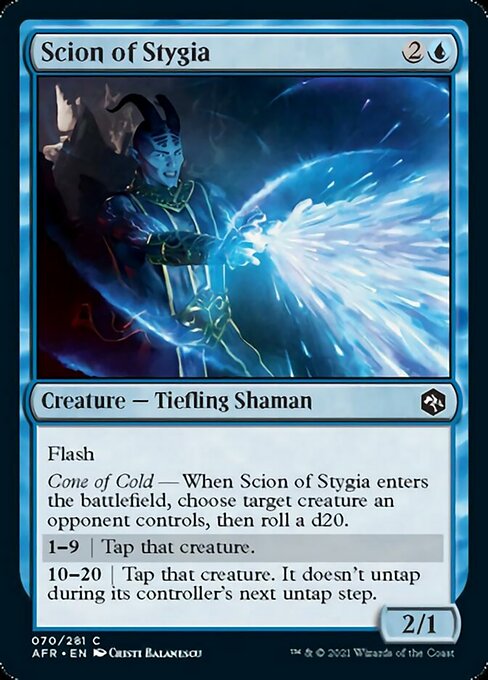
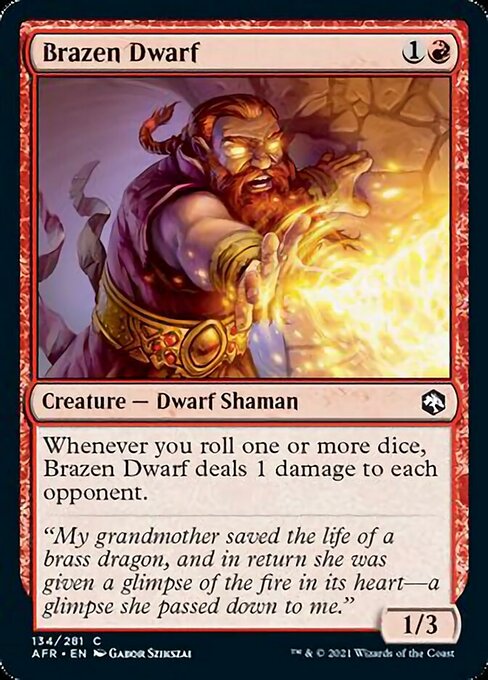
Warlock Class
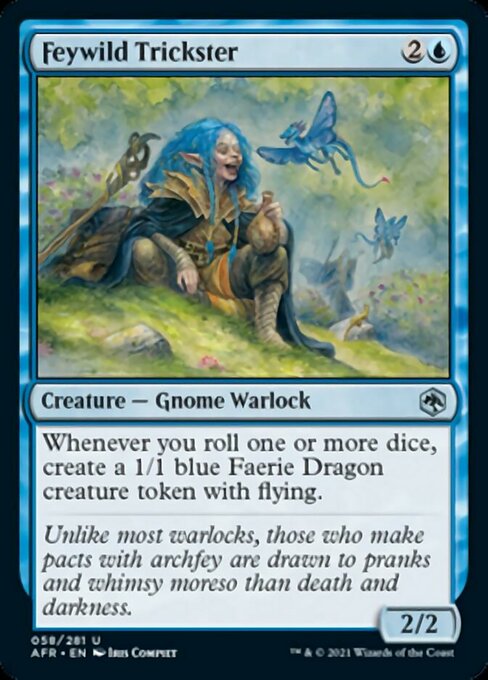
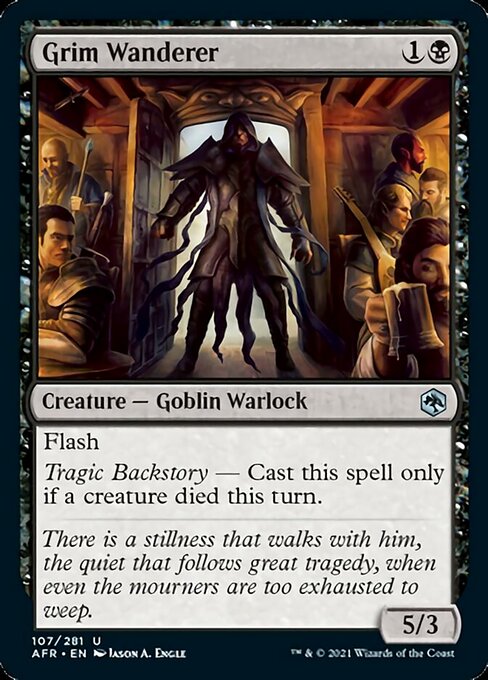
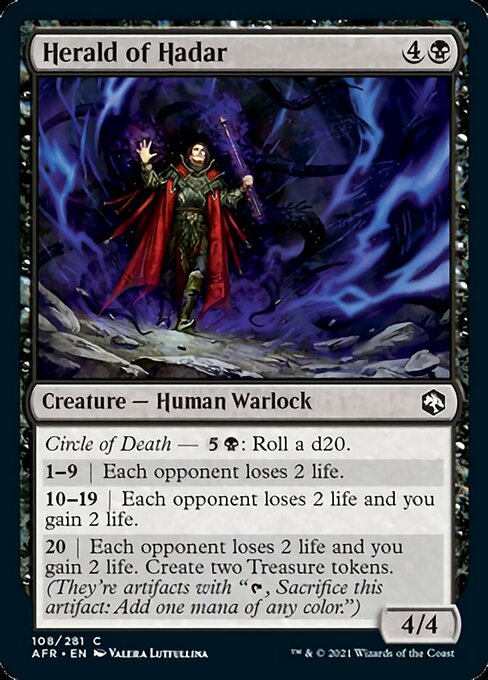
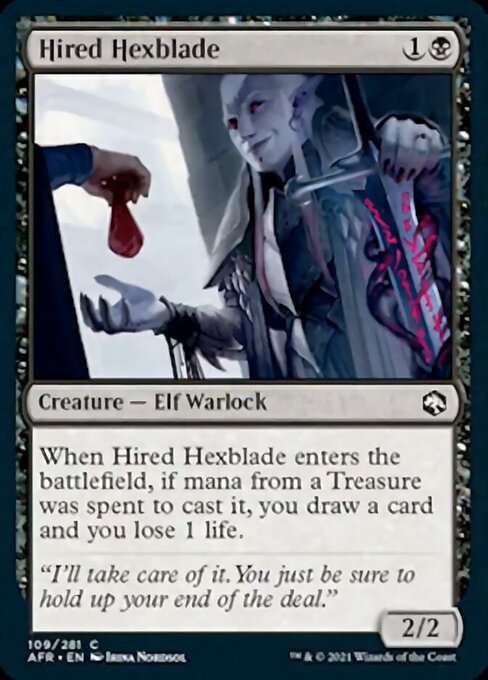
Wizard Class
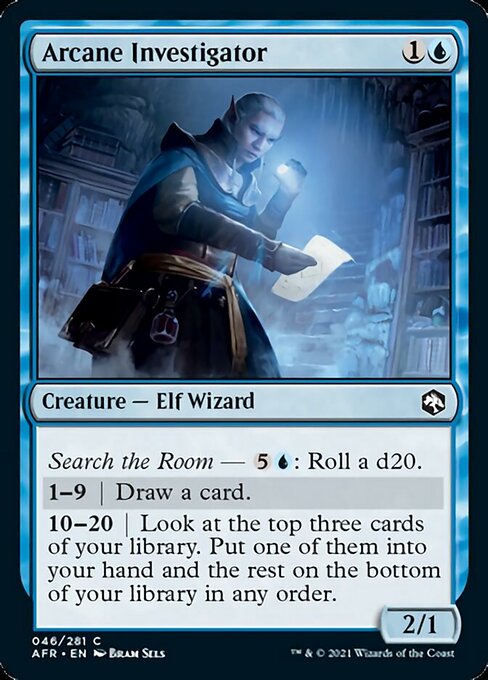
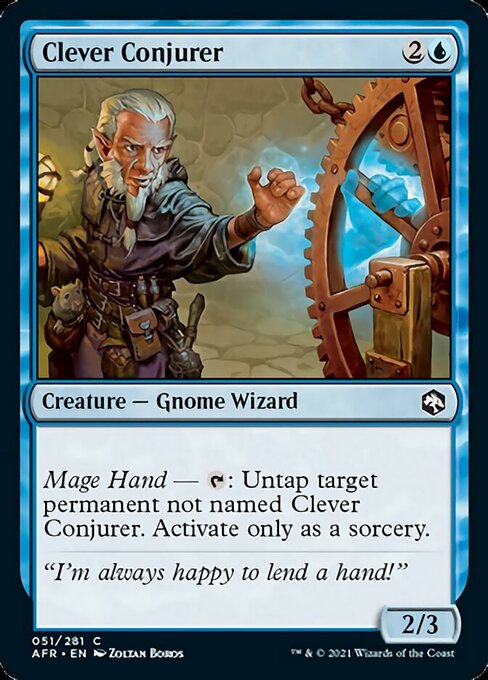


Artificer Class
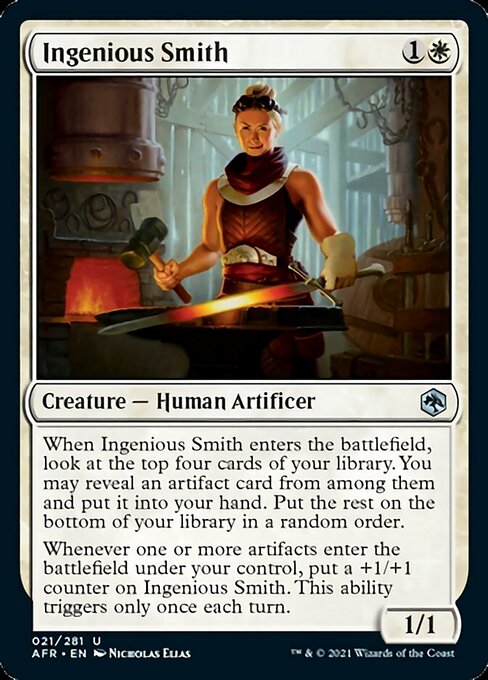
Creature / Monster category
Going through the rest of the creatures in this Magic card set, you’ll find a lot of random animals and monsters. We’ve compared their names, and they don’t exactly correspond to entries in the Monster Manual (MM). For example, there is no exact match listed in the MM for the Loyal Warhound, but you can find some Hounds that have a Bonding ability. So rather than wasting the precious namespace, taking otherwise generic-sounding names from the MM, they’ve added an adjective to separate it from the other Magic cards.
| Gatherer | D&D Beyond |
|---|---|
| Death Tyrant | Death Tyrant |
| Neverwinter Hydra | Hydra |
Non-PCs (NPCs) subcategory
In D&D, when players go into an Encounter, it may be a combat encounter, or a negotiation between characters and NPCs. Players can turn a combat encounter into a negotiation, but the creatures need to understand them. In-game, most intelligent creatures speak a Common language, though some may not. They may speak Draconic, Elvish, etc. But players may attempt to speak to them anyway. Otherwise, they’ll have to resort to using the Animal Handling ability check. Players may attempt to persuade the NPCs, lie to them, etc.
Since this is an interesting aspect of D&D, we thought it would be interesting to further categorise the Magic cards this way: Split the Magic cards according to whether the D&D equivalent can speak or not.
| Gatherer | D&D Beyond |
|---|---|
| Radiant Solar | Solar |
| Chaos Dragon | |
| Vengeful Ancestor | |
| Clay Golem | Clay Golem |
Encounter category
This category is really cool, because these magic cards’ names start with “You…” and are phrases the DM would say to players while playing the game. We’re going to describe each of them, because they’re pretty cool.
| The Encounter | Commentary |
|---|---|
| You Hear Something on Watch | PCs in the game do a lot of things, and they might need to rest to regain their health points (HP,) or to regain spell slots. When they’re going through short rest or long rest, they may have the characters take turns to be on the watch in case their camp is ambushed in the middle of the night. So your character hears something on watch, that’s a clear sign of danger: you might have been discovered in the middle of a rest… |
| You’re Ambushed on the Road | In D&D, there is a lot of travelling between different towns, especially in larger-scale campaigns. Along the way, the DM may want to spice things up a bit by rolling a random encounter to make the players feel like they’re going through a dangerous region of the world. They may be ambushed by some villains or random enemies. |
| You Come to a River | As a DM, we’ve hosted players who do not know how rivers or boats work… Some PCs might also be unable to swim, so rivers present a significant problem in the course of a D&D campaign. |
| You Find the Villain’s Lair | This is a phrase that players may hear while dungeon delving: they were looking for something when they stumbled upon the villain’s hideout. A highlight of any campaign. |
| You See a Guard Approach | While attempting to do something sneaky, like breaking into a villain’s lair, players could have spotted a guard approaching. This could become a negotiation encounter, or if things turn ugly, a combat encounter. It’s a beat often used in D&D storytelling. |
| You Come to the Gnoll Camp | There are some standard monsters in D&D that are used in villainous roles. Gnolls are one of these, so if players encounter one of their camps in a forest… |
| You Find Some Prisoners | While dungeon delving, PCs may encounter a jail with some characters in it. Players may then decide to either release them, and slow down their party’s mobility, or not and come to get them later. This might create some conflict/tension between the lawful and chaotic PCs in the party. |
| You See a Pair of Goblins | There are some standard monsters in D&D that are used in villainous roles. Goblins are one of these, so if players encounter one of their camps in a mountain… |
| You Find a Cursed Idol | If the DM tells players that there’s a cursed idol, players might end up touching it anyway. They’re always trying to get something out of their dungeon delving, a treasure or powerful artefact. |
| You Happen on a Glade | Intentional or otherwise (players may fail a Survival skill check while going through the wilderness, and happen upon a group of Elves who might attack them,) the party might have found a place to rest. |
| You Meet in a Tavern | Last but not least, this may be the most significant card in the set: it’s been a tradition in D&D, for campaigns to begin with a tavern scene. Adventurers may find a quest on a notice board, or be there when a character bursts in asking for help. A tavern is the kind of place for PCs to rest in the middle of a campaign, and for players to do some role-playing to gather intel for their story. It’s pretty nice to see this as a card in AFR. |
| Encounters | Commentary |
|---|---|
| Valiant Endeavor | DM might note that the party made a valiant effort, and reward them with additional loot, and some extra experience points. |
| Arcane Endeavor | DM might decide to have the Intelligence-based player-characters go on a side-quest… |
| Grave Endeavor | DM might decide to have the party encounter some undead… |
| Reckless Endeavor | Players may decide to do something against the DM’s advice… |
| Wild Endeavor | DM may decide that the campaign needs to go outdoors… |
Advance the Plot subcategory
These are things that aren’t for the DM to say per se, but they refer to things that happen during the course of a campaign. Looking at the artwork, they seem to refer to some very specific things in D&D.
| Advancing the Plot | Commentary |
|---|---|
| Secret Door | Puzzles are a big part of D&D, whether in the form of poems, patterns, or players exploring the room and discovering hidden chambers. |
| Sudden Insight | The flavour text mentions a magical item found in the Dungeon Master’s Guide (DMG) called a Deck of Many Things. The card they’re referencing is probably the Vizier card, which allowed Voltusk to solve a puzzle. |
| Demogorgon’s Clutches | The artwork depicts the form of Demogorgon, ready to drag a character into the Abyss. |
| Devour Intellect | The art depicts the terrifying, but not very creatively named Intellect Devourer: a creature that’s a walking brain may eat your mental health. |
| Eye of the Beholder | The Magic card’s name is that’s a pun on a common English phrase, and the art depicts a Beholder, attacking a character with a Disintegration Ray, turning the target into fine grey dust. |
| Fate’s Reversal | |
| Grim Bounty | The artwork depicts the grim aftermath of a party completing a quest: bringing back proof of having slain a dragon to the village so they can collect a handsome reward. |
| Precipitous Drop | We aren’t sure what the card depicts: perhaps a character that falls during a dungeon crawl, is lost forever and is hence weaker? Risk losing a creature forever if you exit a dungeon. |
| Dragon’s Fire | Welcome to Dungeons & Dragons. |
| Farideh’s Fireball | The artwork depicts Farideh, a character from the Forgotten Realms lore. |
| Price of Loyalty | The artwork depicts a corrupt Flaming Fist, receiving a bribe. |
| Unexpected Windfall | One of the most interesting references: the artwork depicts a magical item found in the DMG called a Deck of Many Things. The card that’s depicted here is the Gem card, that when pulled in-game, will cause a lot of treasure, gems, gold, etc. to appear at the character’s feet. The card is a perfect illustration of that happening. |
| Bull’s Strength | |
| Compelled Duel | |
| Plummet | |
| Skeletal Swarming | A classic zombie/skeleton attack by the forces of the Undead. |
| Spiked Pit Trap | While dungeon delving, players may forget to check for traps, and fall into one. There’s a large variety of these Indiana Jones-esque traps in D&D dungeons: a giant stone ball rolling down towards you, etc. The Magic card has Flash because it’s supposed to be a surprise! |
| Advancing the Plot | Commentary |
|---|---|
| Netherese Puzzle-Ward | Players may encounter a chamber with the magic of Netherese origin. |
| Maddening Hex | Players may encounter an eldritch complication… |
| Extract Brain | Players may encounter a vicious Mind Flayer… |
| Fevered Suspicion | Players may encounter a suspicious Beholder… |
| Klauth’s Will | Players may decide to journey into the Klauthen Vale… |
Party Actions subcategory
The Party Actions below were only printed as Magic: the Gathering cards for the Forgotten Realms Commander (AFC) decks...
Equipment category
This category is pretty interesting because there are literally Equipment Artifacts in Magic. Some of the cards here refer to some pretty standard stuff that you’ll find in the PHB:
| Type | Gatherer | D&D Beyond |
|---|---|---|
| Armour | Paladin’s Shield | Shield + Holy Symbol |
| Armour | Plate Armor | Plate |
| Armour | Leather Armor | Leather |
| Weapon | Dueling Rapier | Rapier |
| Weapon | Goblin Morningstar | Morningstar |
| Weapon | Ranger’s Longbow | Longbow |
| Weapon | Greataxe | Greataxe |
| Weapon | Spare Dagger | Dagger |
| Wizard’s Spellbook | Spellbook |
| Gatherer | D&D Beyond |
|---|---|
| Component Pouch | Component Pouch |
Magical Equipment category
Here you’ll also find magical items that can be found in the DMG. You’ll also find the alphabetically superior “+2 Mace.” In D&D, this is a regular mace that has been refined by a ‘smith. It has gone up by a couple of levels, so when a PC attacks with it, they’ll get a +2 on that roll… but in Magic, it gives the creature a +2/+2. We aren’t sure why it does that, as it’s an offensive weapon (we suppose you could parry with it?) but it shouldn’t increase the HP nor the Armour Class (AC), so it doesn’t make sense for the creature’s toughness to go up…
| Type | Gatherer | D&D Beyond |
|---|---|---|
| Weapon | +2 Mace | Mace + Weapon, +1, +2, or +3 |
| Weapon | Dancing Sword | Dancing Sword |
| Weapon | Vorpal Sword | Vorpal Sword |
| Boots of Speed | Boots of Speed |
| Type | Gatherer | D&D Beyond |
|---|---|---|
| Weapon | Holy Avenger | Holy Avenger |
| Weapon | Fiendlash | |
| Weapon | Sword of Hours | |
| Robe of Stars | Robe of Stars | |
| Winged Boots | Winged Boots | |
| Belt of Giant Strength |
Items category
These are things that while PCs can’t equip themselves, they’re things that PCs would use during the course of the campaign. There are also non-magical objects in this category, such as thieves’ tools, and (literally) 50 feet of rope.
In D&D, some groups may use a map with a grid on it to play the game. As a standard, each 1-inch square represents 5 feet in-game. So you can imagine how long 50 feet of rope represents in relation to a PC’s figurine on a 2D plane. Imagine how high/deep a dungeon must be…
| Gatherer | D&D Beyond |
|---|---|
| Delver’s Torch | Torch |
| Thieves’ Tools | Thieves’ Tools |
| Dungeon Map | Map* |
| Fifty Feet of Rope | Rope, Hempen (50 feet) or Rope, Silk (50 feet) |
| Treasure Chest | Chest |
Magical Items category
Random things like Portable Holes, and Potions of Healing, which are magical; and can be found in the DMG:
Our favourite, classic Bag of Holding. We’ve probably given away too many of these as a DM, because we would rather focus on the story than be bogged down by encumbrance. Players can just shovel their loot into this magical bag that holds more than it appears to be able to (Doraemon’s pocket?)
| Gatherer | D&D Beyond |
|---|---|
| Portable Hole | Portable Hole |
| Potion of Healing | Potion of Healing |
| Trickster’s Talisman | Talisman of Tymora? |
| Reaper’s Talisman | Talisman of Myrkul? |
| Orb of Dragonkind | Orb of Dragonkind |
| Bag of Holding | Bag of Holding |
| Gatherer | D&D Beyond |
|---|---|
| Immovable Rod | Immovable Rod |
| Rod of Absorption | Rod of Absorption |
| Bag of Devouring | Bag of Devouring |
| Bag of Tricks | Bag of Tricks |
| Ebony Fly | Figurine of Wondrous Power (Ebony Fly) |
Legends category
Magic literally has Legendary Creatures and Legendary Planeswalkers, which AFR has utilized perfectly: uniquely named cards that refer to characters that appear in a lot of D&D lore, novels, campaigns, video games, etc.
Legendary Artefact subcategory
Here you’ll find the aforementioned Deck of Many Things, alongside the Book of Exalted Deeds and the Book of Vile Darkness. These were literally real-world books, and are also in-game items of legend.
You’ll also find the Staff of Waterdeep, which is both a role in the city of Waterdeep (the biggest city in Faerûn, which corresponds to our Europe) and an object of legendary power.
The Eye of Vecna, and the Hard of Vecna, are both objects of legendary evil. Magic players may think they assemble like the Kaldra artifacts from Mirrodin…
| Gatherer | D&D Beyond |
|---|---|
| Wand of Orcus | Wand of Orcus |
| Bucknard’s Everfull Purse | Bucknard* |
*Bucknard is actually from Greyhawk!
Legendary Locations subcategory
Weirdly enough, even though we categorize them under Legendary Locations, all of these Magic cards that reference them are basic Lands. We’ve gathered them so because the flavour text explicitly names a specific location in Faerûn. It’s pretty cool these locations get name drops, and the artwork shows that.
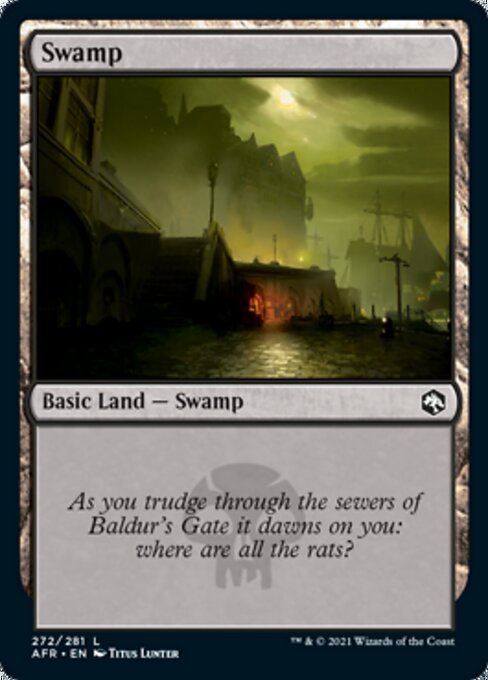
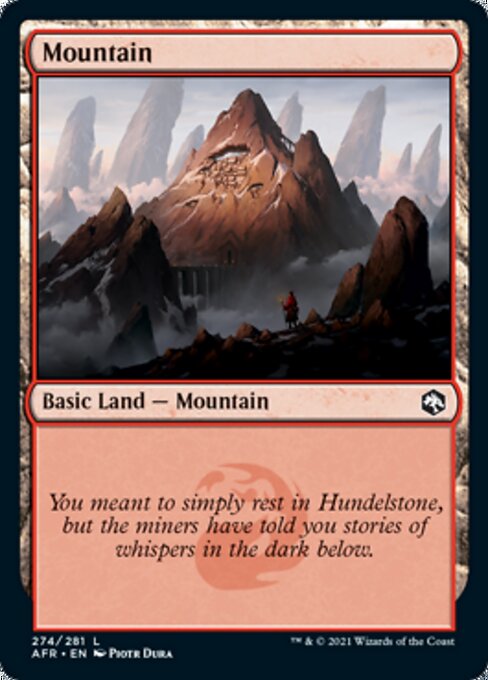
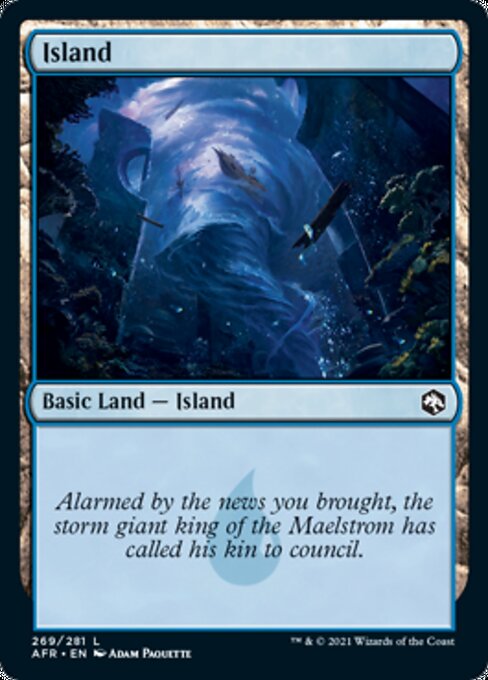
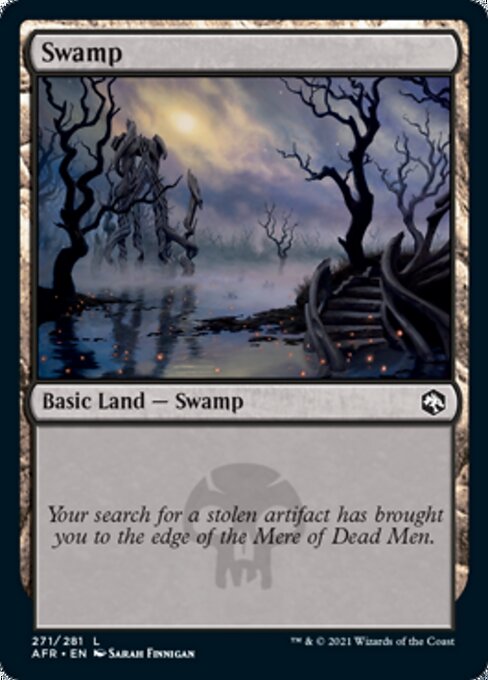
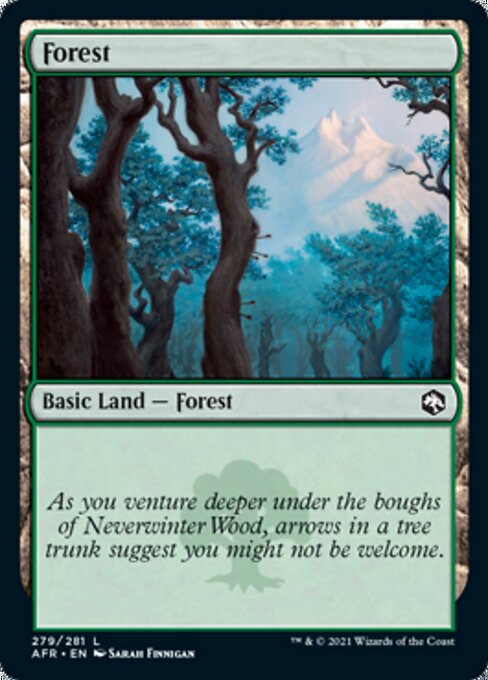
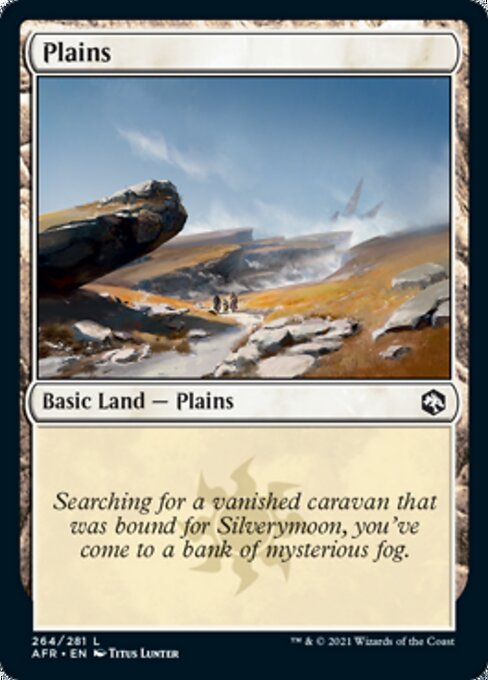
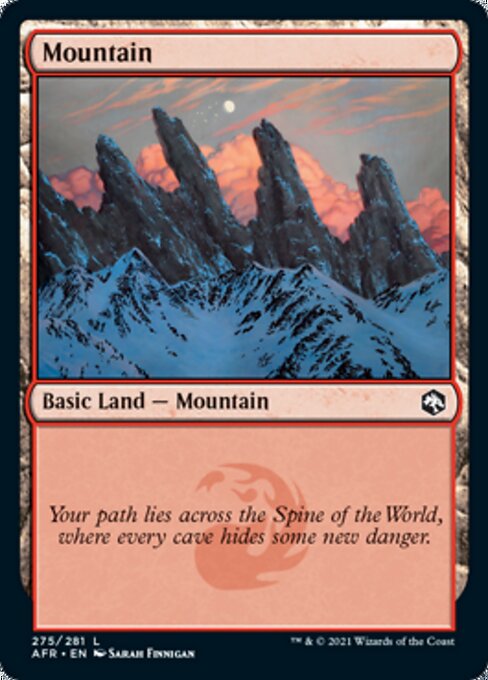
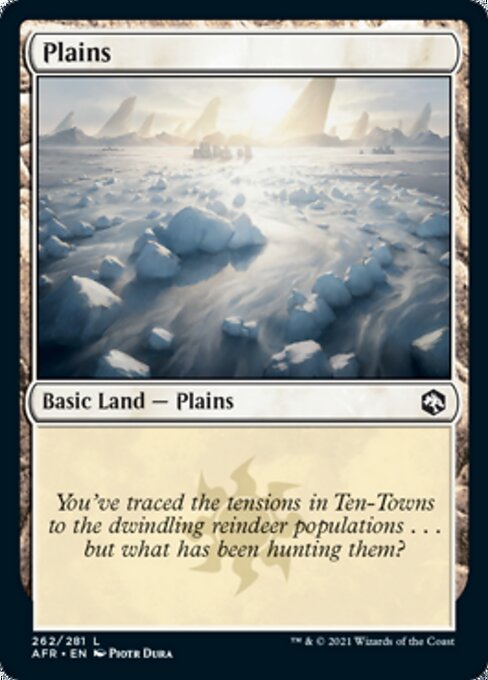

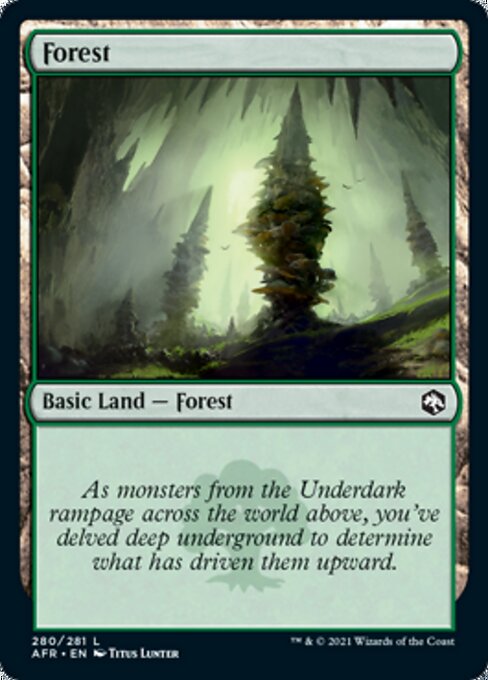
Campaigns subcategory
These non-basic lands bear the name of famous/significant locations in campaigns. These are all significant locations in the lore of D&D, but may not be towns, but mega-dungeons, etc.










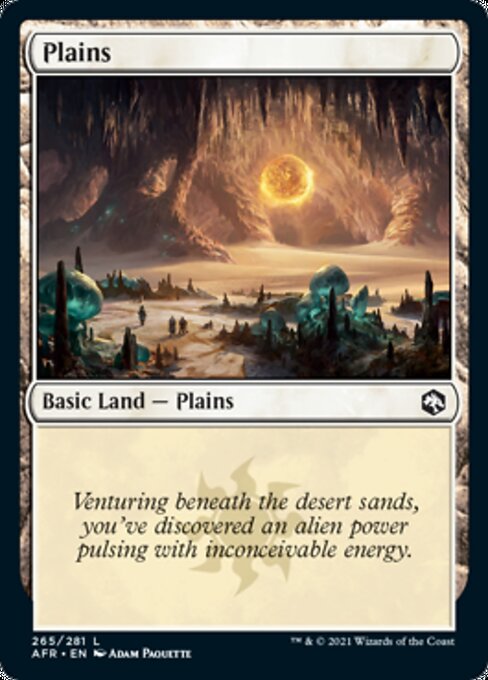
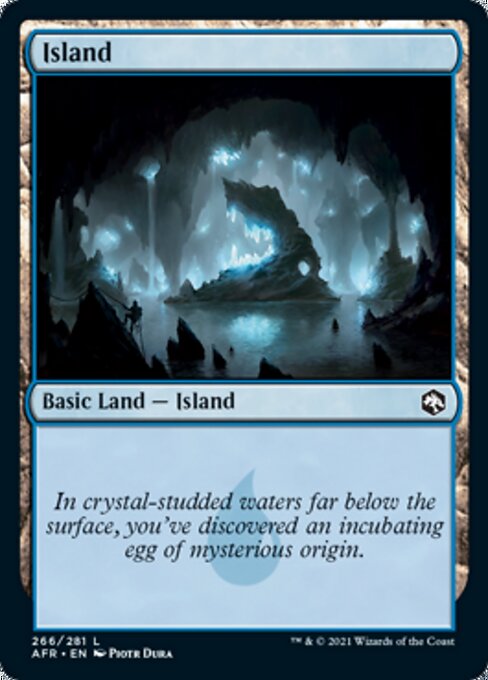

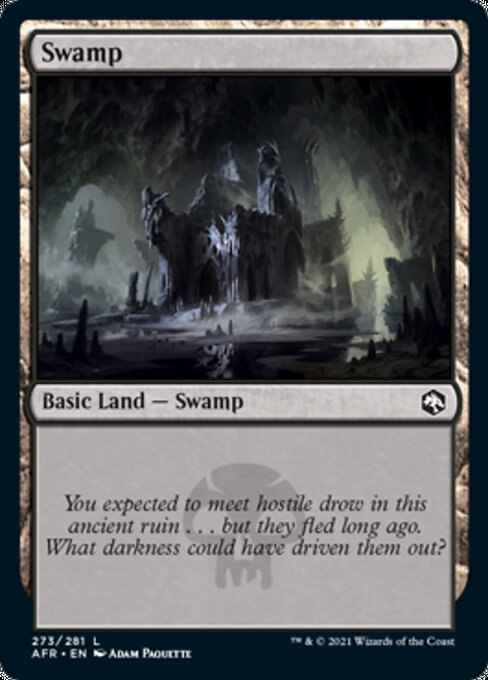
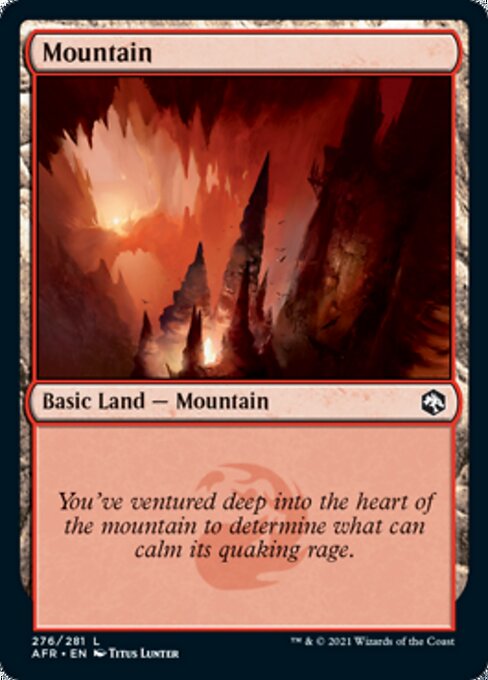
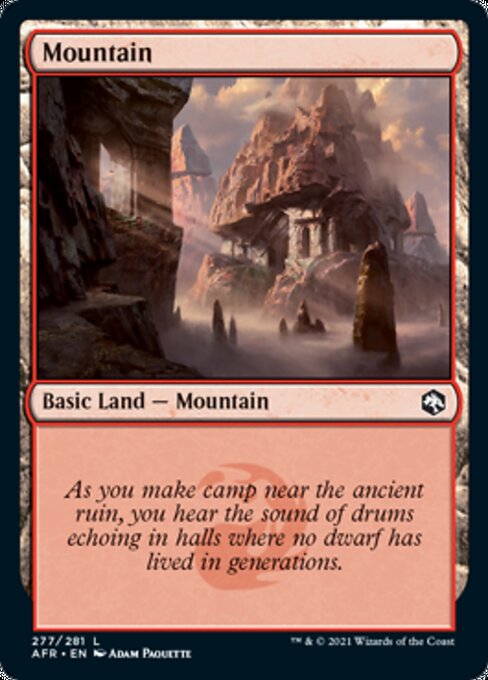
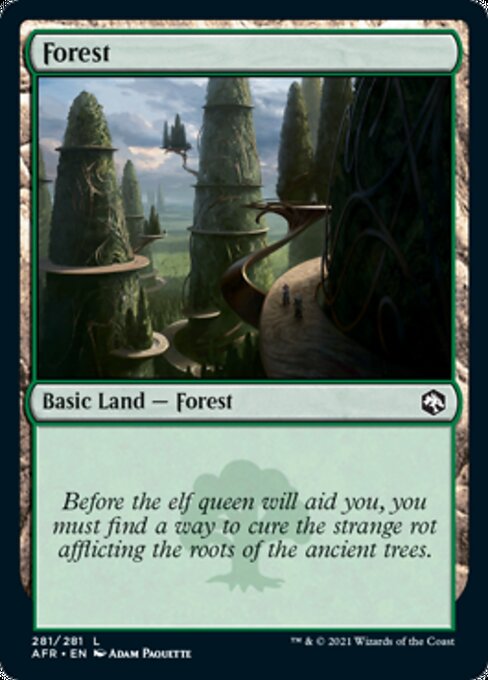
Spells & Abilities category
Lastly, we took the effort of looking up each Magic card and found that some of them refer to certain spells and abilities in D&D (but some of them paraphrase it due to namespace issues.)
Etc. category
There were some special cards printed to be used alongside Magic AFR cards, called Dungeons to be used alongside the “Venture into the Dungeon” mechanic. As a DM, we found these to be pretty cool but oversimplified versions of maps used in a game of D&D: PCs going through a dungeon will often discover forking/multiple paths through it. So they don’t always have to take the one road planned by the DM, who would otherwise literally be railroading the campaign…
These Dungeon cards reference printed D&D 5th Edition campaigns such as the Lost Mine of Phandelver, Tomb of Annihilation, and Dungeon of the Mad Mage (which name drops the Yawning Portal, a very famous location in D&D lore that’s a Waterdhavian pub/tavern with a literal hole in the middle of it.)



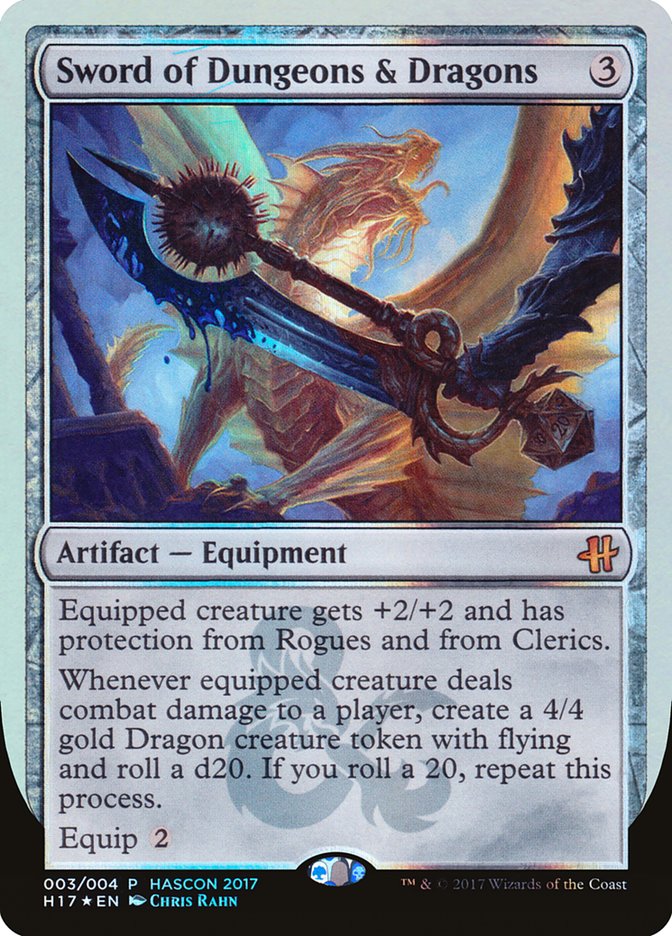
which seems to be part of the duality sword-artefact series.

D&D themed Heroes of the Realm cards that were handed out to Wizards of the Coast employees only…

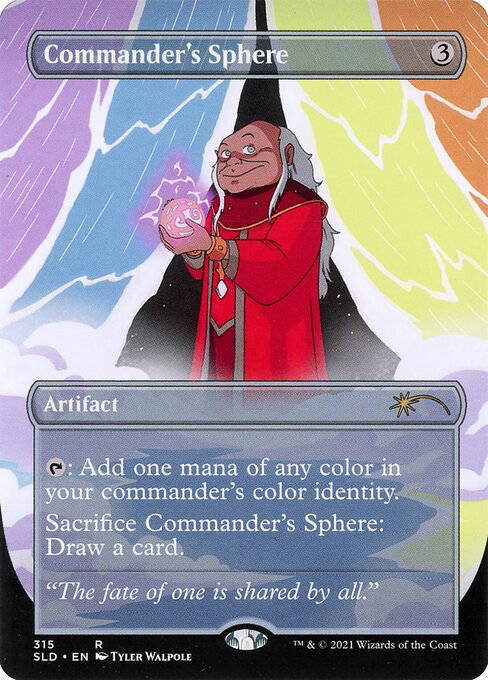
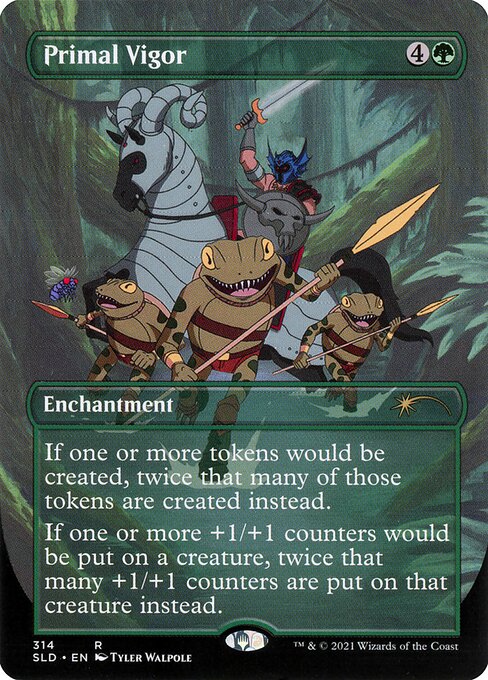
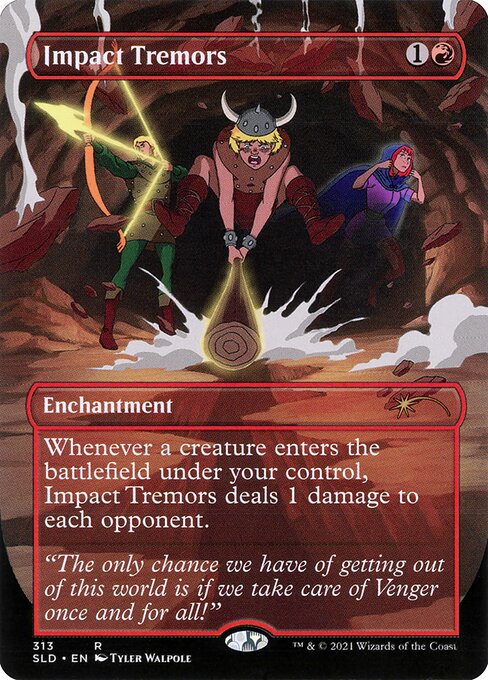
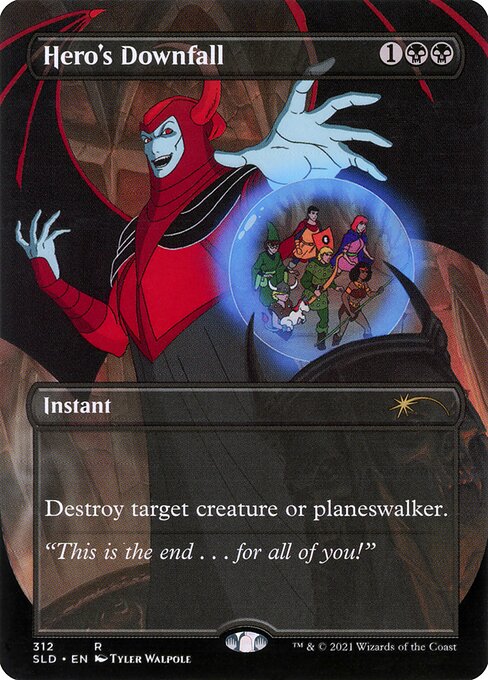
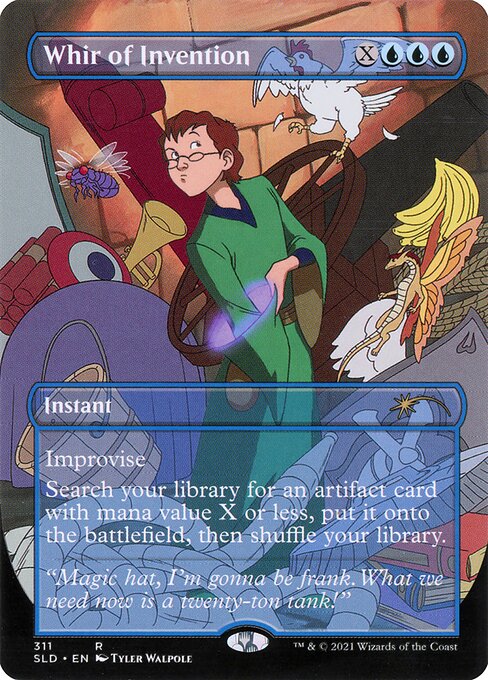
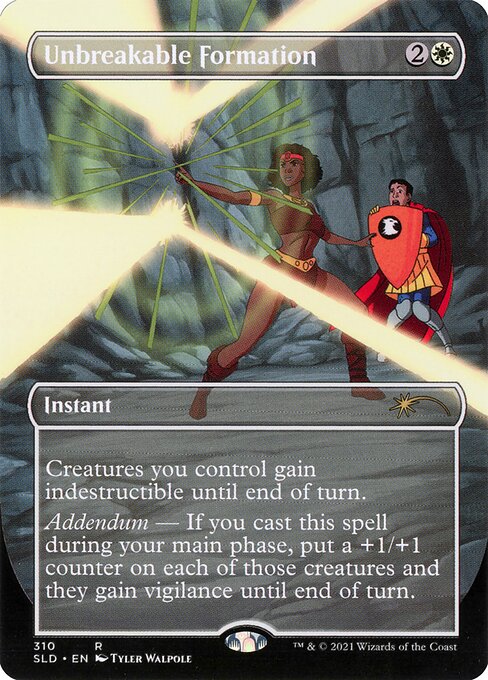
Every game is a new campaign.
Everything you love from Dungeons & Dragons meets Magic in the Forgotten Realms! Play cards featuring fan-favourite characters, and battle with iconic monsters like beholders, mimics, mind flayers, and—of course—legendary dragons!

If you want to actually play the Role-Playing Games, check out the fifth edition Player’s Handbook, Monster Manual, and Dungeon Master’s Guide. These rulebooks introduce you to the vast multiverse of D&D and invite you to create unique characters and worlds within it.
